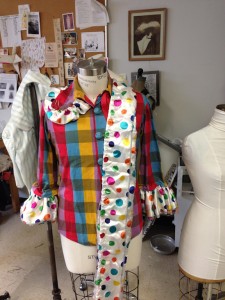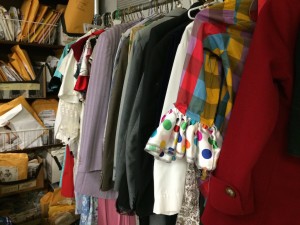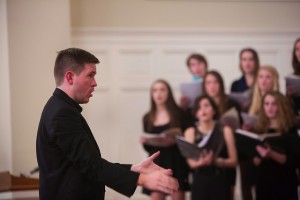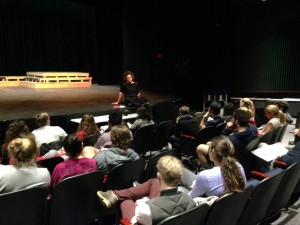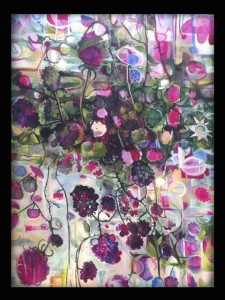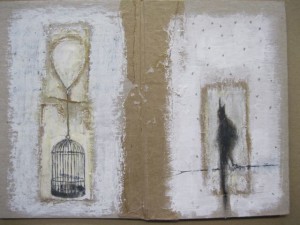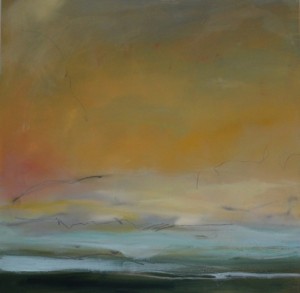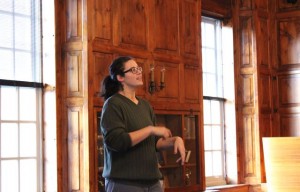Located within the deepest depths of Scott Hall is an integral part of making theater magic at the Williston Northampton School. I am talking, of course, about the amazing Costume Shop.
The costume shop at Williston consists of two rooms that are located under the main theater facility and technical production shop in Scott Hall. Ilene Goldstein is the costume designer for the Williston Theater and is the main presence within the Costume Shop. She runs an after school program within the Technical Theater afternoon program option where students learn sewing techniques in order to help create the costumes that are used in Williston productions. Ilene, however, can often be found in the costume shop most hours of the day working tirelessly on the amazing costumes that grace the Williston stage.
Within the first room of the Costume shop anything from sewing machines to ironing boards and even a washing machine can be found and are used in order to make the costumes for the Williston Theater the best they can possibly be. In the second room is the Costume Closet, in which almost all of the costumes Williston has ever used reside. It is here that the journey of two new costume designers within the Theater Lab program begins.
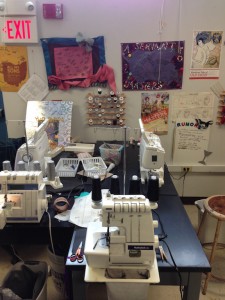 Roya Mostafavi and I are the two costume designers for the one act theater productions taking place this winter within the Theater Lab program. It is our job as costume designers to know the visions of all four directors, and to craft costumes that are suitable to the place, time, season, setting and theme of the director’s productions. Both Roya and I have only rudimentary sewing skills, so it is incredibly fortunate that we are not personally making the costumes from scratch for our various productions. Instead we must both dive into the many aisles and shelves within Williston’s vast costume shop and pull anything and everything that we feel would suit and fit an actor and their character.
Roya Mostafavi and I are the two costume designers for the one act theater productions taking place this winter within the Theater Lab program. It is our job as costume designers to know the visions of all four directors, and to craft costumes that are suitable to the place, time, season, setting and theme of the director’s productions. Both Roya and I have only rudimentary sewing skills, so it is incredibly fortunate that we are not personally making the costumes from scratch for our various productions. Instead we must both dive into the many aisles and shelves within Williston’s vast costume shop and pull anything and everything that we feel would suit and fit an actor and their character.
Gathering the costumes for all four of the plays being produced as part of Theater Lab has been a very collaborative process. The directors, Ilene, Roya and I have all had to come together in order to bring to fruition the visions of each director. Whether it was improvising a full clown costume or trying to find clothes to fit a high powered New York lawyer; the process of finding costumes for all four shows has certainly kept us all on our toes. Even within the extensive collection of the Williston Costume Shop some items have been too difficult to find. Luckily, just a five minute walk from the theater lives a small thrift shop by the name of The Parsons’s Closet. It was here the Roya and I were able to buy many necessary parts for the various costumes we were working on. Through the many on and off campus resources, and the amazing guidance of Ilene, Roya and I have almost completed every costume for the Theater Lab productions, and I must say I am very proud of our results thus far.
Overall, it has been a very fun process having input into the costume designs of a theater production. When acting I never felt truly in character until I put on my costume, so it has been a great privilege to be able to create the vessel that will carry all of the actors into the imaginary world of their shows. – Noah Jackson ’15


